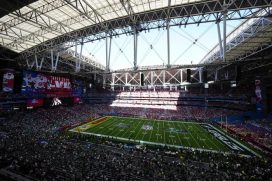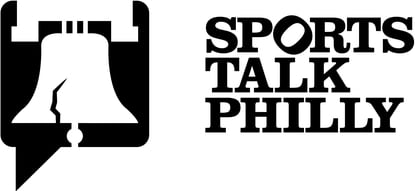The Eagles kicked off their offseason last week by trading Byron Maxwell, Kiko Alonso and their first-round pick to the Miami Dolphins in exchange for the eighth overall selection in April's draft.
Howie Roseman has claimed that one of the goals the franchise set for this offseason was to move into the Top-10, where they could be in a prime position to take a player who could be a building block for the next great Eagles team.
But a look at the Eagles track record in the Top-10 should not give any fans hope that Roseman and company will make the right selection when they are on the clock next month.
All told, the Philadelphia Eagles have made 36 selections in the Top-10 of the NFL Draft since its inception in 1936. The first was the first pick of that inaugural draft and the Eagles made the obvious choice, selecting the "one-man football team" and reigning Heisman Trophy winner Jay Berwanger of the University of Chicago.
However, due to a contract dispute, the halfback ended up being traded to the Chicago Bears, but never played a down in the NFL and went on to work in a rubber factory for most of his life. The Berwanger debacle set a precedent for the Eagles in those early drafts. In fact, it took eight years and five more Top-10 busts until they were able to strike gold at the top of the draft.
In 1944, with the fifth overall pick, the Philadelphia Eagles selected halfback Steve Van Buren out of LSU. In just eight seasons, Van Buren amassed 6,383 yards from scrimmage and 72 touchdowns while picking up five All-Pro selections. He was an integral part of the 1948 and 1949 championship teams, is a member of the Pro Football Hall of Fame and had his No. 15 retired by the Eagles.
Five years later, the Eagles found themselves with the top pick in the draft again and selected a linebacker from the University of Pennsylvania. All Chuck Bednarik did was get selected to eight Pro Bowls, five All-Pro teams, lead the Eagles to the 1960 championship by playing both linebacker and center during the final four games of the season at the age of 35 and become the gold standard against which all Eagles are forever compared to.
Between the Bednarik pick in 1944 and 1964, the Eagles hit another rough patch in the top of the draft, making eight picks, of whom, only fullback Clarence Peaks made a solid contribution to the team, averaging over five yards per carry in 1960. Although, to be fair, fullback/end Dick Bielski made nine field goals in his rookie season, (on 23 attempts, which is somehow just the sixth-worst single-season percentage in team history.)
In 1964, the Eagles utilized the second overall pick on an offensive tackle out of Nebraska named Bob Brown. Brown was listed at 6'4", 295 pounds, and was described as the "most aggressive offensive lineman that ever played" by John Madden. After suffering through five seasons where the Eagles managed just one winning season, head coach Joe Kuharich was fired and Brown promptly demanded a trade. He finished his career with the Rams and Raiders and was enshrined in the Pro Football Hall of Fame in 2004.
Once again, after the selection of Brown, the Eagles struggled to capitalize on their top picks, finding just two Pro Bowlers, tight end Charlie Young played just four seasons for the Eagles, making three Pro Bowls and tackle Jerry Sisemore stuck with the team for over a decade, making a pair of Pro Bowls in the process. In his Eagles Encyclopedia, Ray Didinger described Sisemore as "big and strong, quiet as a summer night on the panhandle." Young, on the other hand, refused to be recognized as a "rookie." Instead, as a "first-year player" he racked up over 800 receiving yards and was named an All-Pro.
Perhaps the most infamous pick during this time period came in 1983. In a draft that produced six Hall of Famers in the first round, the Eagles picked running back Michael Haddix out of Mississippi State with the eighth selection. Haddix went on to average a putrid 3.0 yards per carry in an eight-year career, a record for futility that still stands to this day.
However, in recent years, the Eagles have drafted fairly well when they have possessed a top-10 pick. For every bust such as Antone Davis in 1991 or Kevin Allen in 1985, the Eagles have hit on a prospect like Jerome Brown, who made two All-Pro teams before his career was cut tragically short by a car accident, or Donovan McNabb, who was able to shake off the chorus of boos he received at the draft to become the most decorated quarterback in the history of the Philadelphia Eagles.
In the past decade, the Eagles have made just one Top-10 selection, tackle Lane Johnson in 2013. Based on the struggles of the rest of that draft class, it's clear that the Oklahoma product was clearly the correct pick.
With a little over a month left until the draft, Roseman and the rest of the Eagles scouting department will be doing their best to make sure they can find that player who will be able to solidify a position on the field for the next decade. The Eagles Executive Vice President of Football Operations has already said that the franchise believes there is a huge dropoff between picks 10 and 11 and that is why the team prioritized moving up into the top-10.
As we've noted, the top-10 isn't a sure thing, no matter how confident Roseman and company are. But with guys like Ronnie Stanley, Myles Jack and Ezekiel Elliott in play around the eighth overall pick, it is hard to imagine the Eagles not drafting their next perennial Pro-Bowler.
Tucker Bagley is a columnist for Eagledelphia. Follow him on Twitter @tbagley515.







